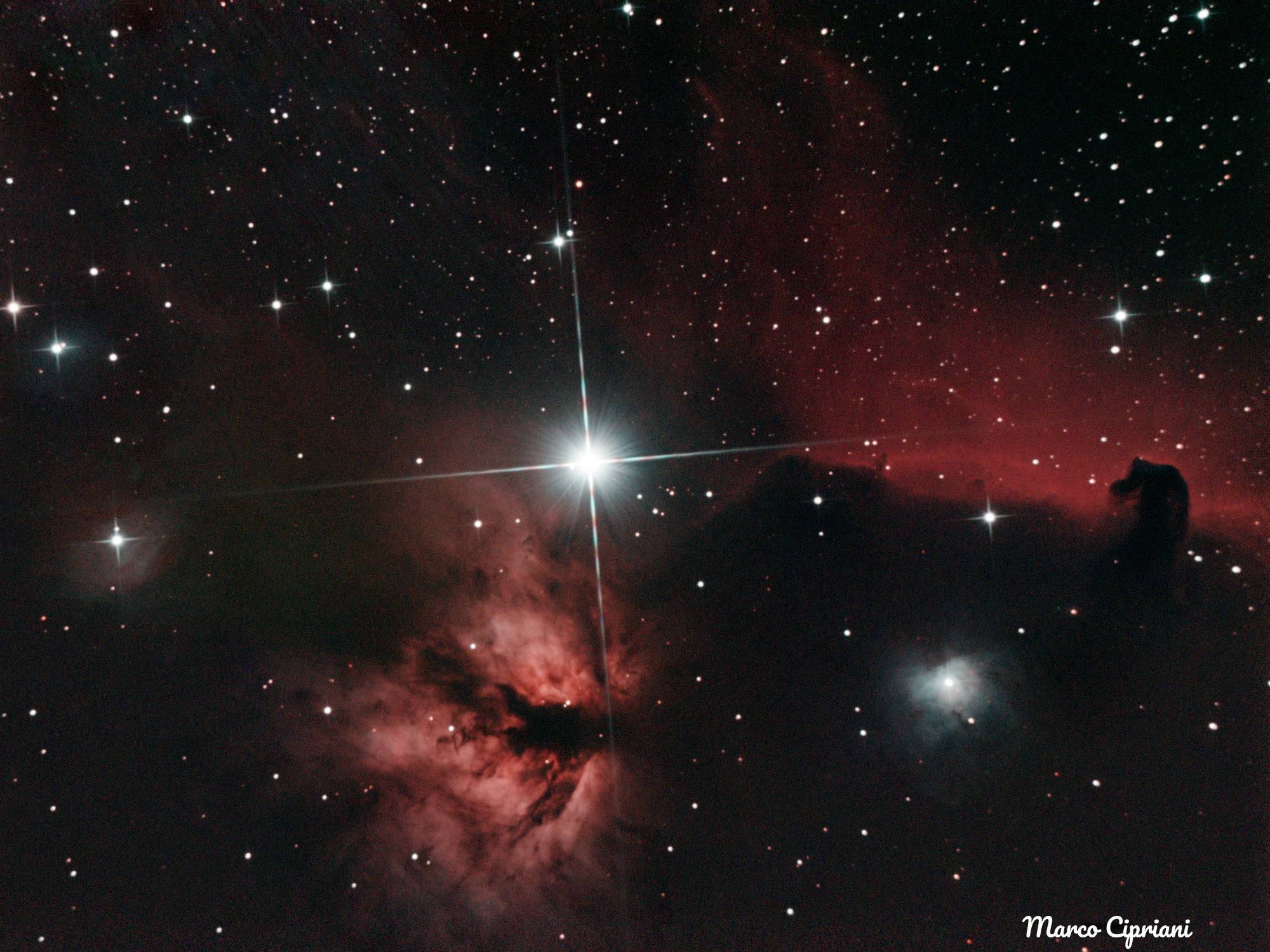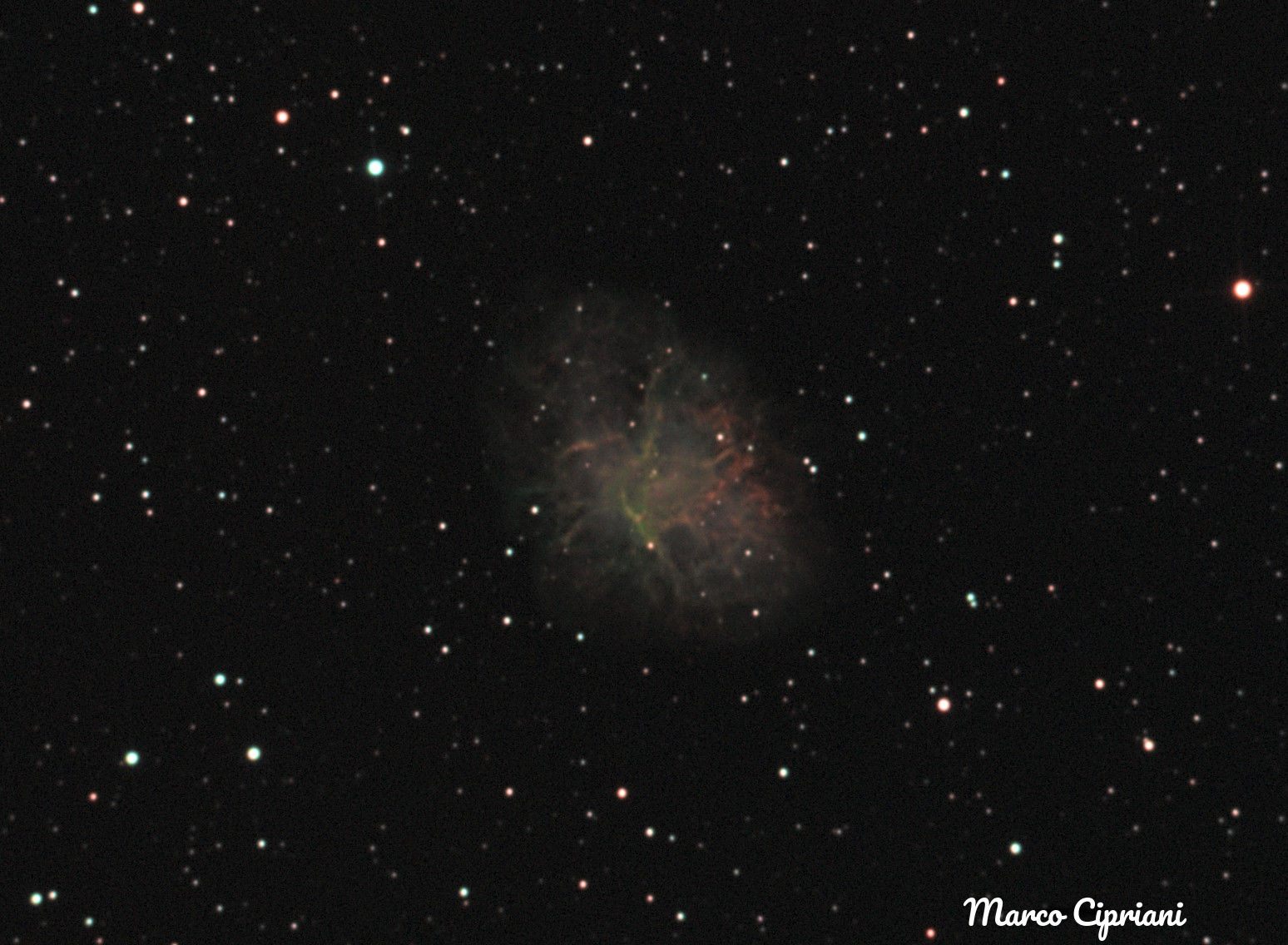Horsehead nebula and M1
Astrophotography, Nebulae, Sky-Watcher Newton 200 ·My photos of the Horsehead, Flame and Crab Nebulae under strong light pollution, taken from my backyard in Italy during these cold days (thanks remote control!). My usual gear and a lot of efforts… but the result is unbelievable and very good for my setup and imaging location!


Horsehead nebula photo, Crab nebula photo
Horsehead and Flame Nebulae
A little of dust between us and the hydrogen region IC 434 delimits an obscure nebula remotely similar to the head of a horse, on the right side of the photo. The Horsehead Nebula, also known as Barnard 33, is near Alnitak, that is the thirteenth brightest star of all, in Orion’s belt, and stands out at the centre of the frame. B 33 is 1500 light-years away and is near the Flame Nebula, or NGC 2024, below Alnitak, which is an emission nebula.
The photo
52 frames, 240 seconds ISO 800 per photo (for a total of almost four hours): it took two nights to photograph it and several hours of processing in Astro Pixel Processor and GIMP. Calibration frames: 56 darks, flats, dark flat and offset frames. Average stacking, stretch, curves and noise reduction: just a few steps to keep the noise-to-ration as low as possible.
The Crab Nebula
M 1 is one of the most famous nebulae of the sky: one can surely find it in every astronomy book. It’s a supernova remnant in the constellation of Taurus and, despite of its fame, it’s quite faint. The Crab Nebula is 6500 light-years away and in 1054 explosed in such a great way that American and Arabic astronomers observed it for more than twenty days even under daylight. The nebula also hides a very bright pulsar (a neutron star).
The photo
Same parameters of the previous photo.
